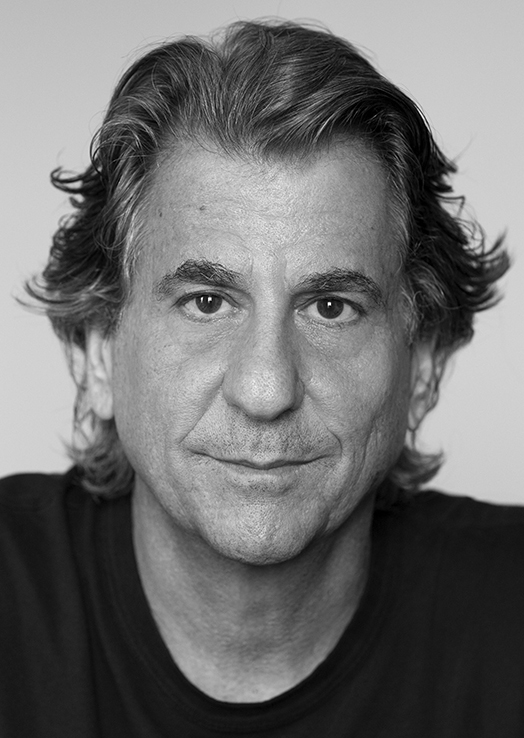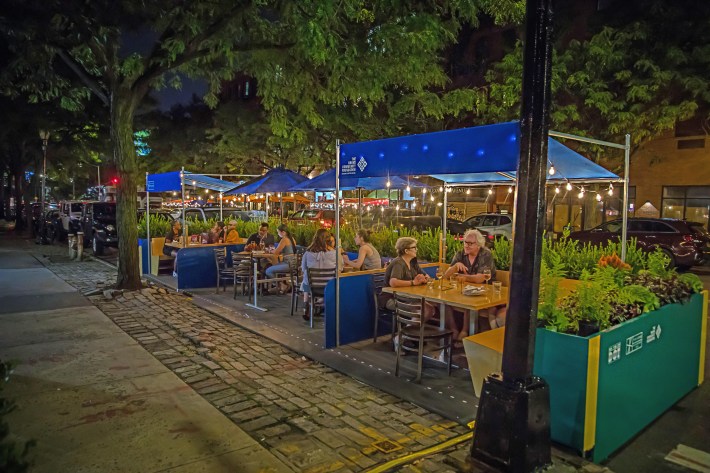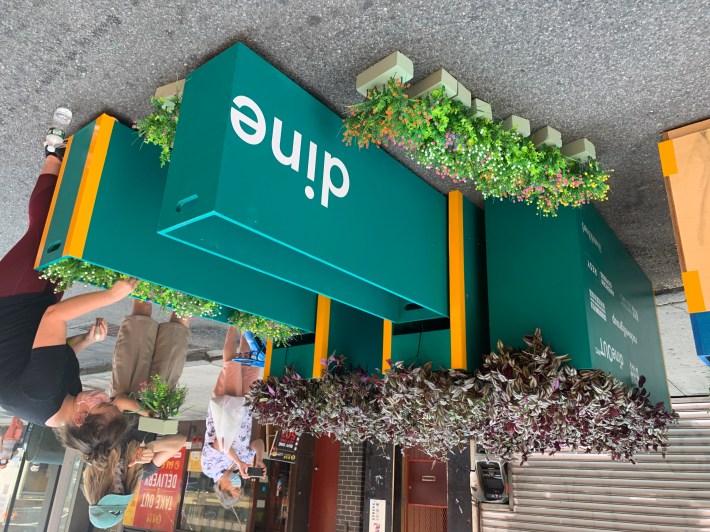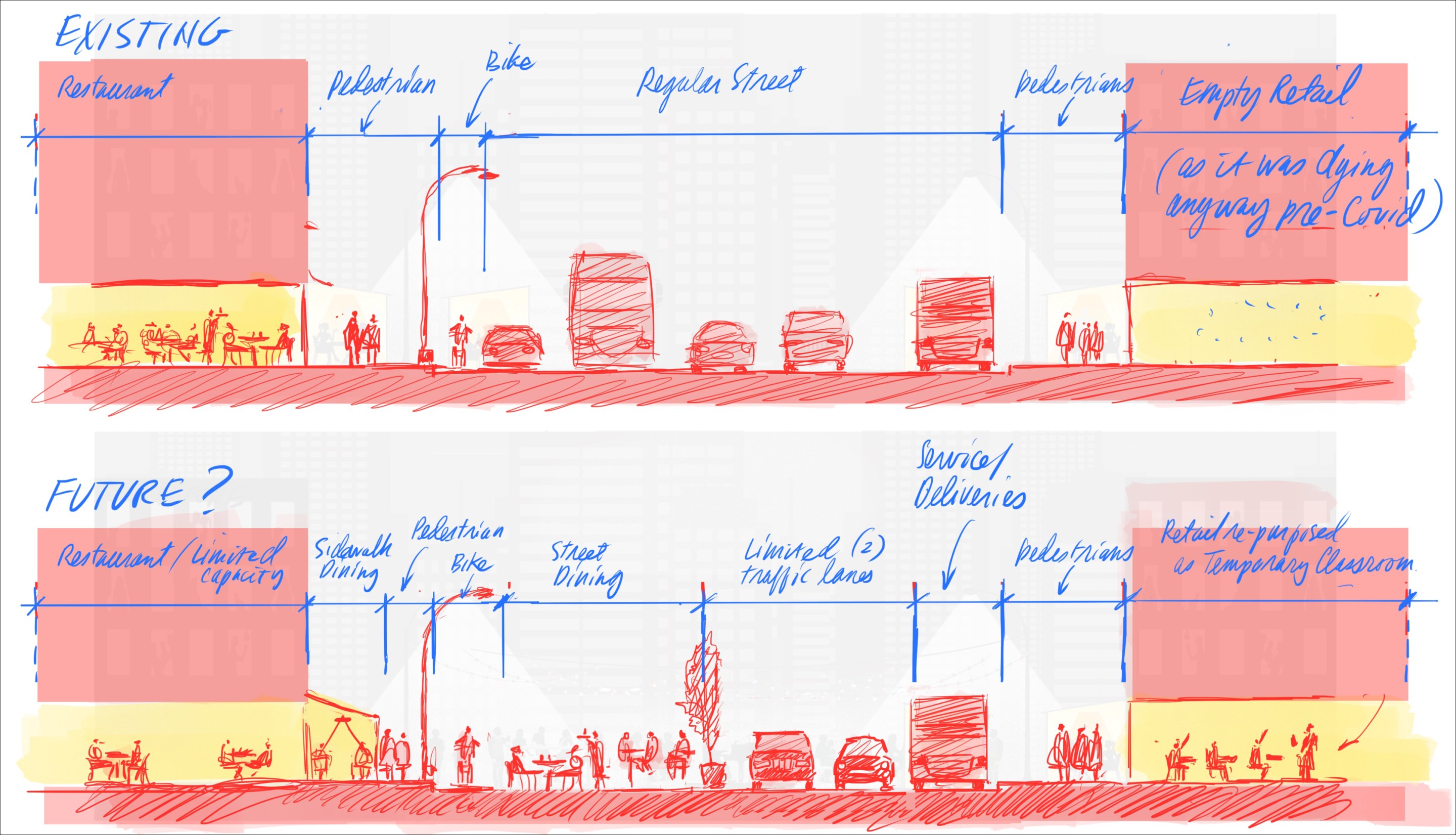No single architect has been as closely associated with imagining and implementing visions for outdoor dining during the COVID-19 pandemic than David Rockwell. The designer, mostly known for his theatrical sets for such shows as "Hairspray" and "Kinky Boots" and for flashy restaurant interiors such as Nobu, created a mini-design studio, DineOut NYC, within his existing Rockwell Group to provide schematics for restaurants to download and build. Plus, he created communal dining areas in six neighborhoods, including Chinatown and Jackson Heights, as Streetsblog reported.
Then, out of the blue, the starchitect sent over his latest vision: to transform New York City's streets by removing parking ... and opening up possibilities. He chatted on Thursday with Streetsblog Editor Gersh Kuntzman (full disclosure: Kuntzman has eaten at Rockwell-designed restaurants back when people did stuff like that). Here are excerpts from that conversation — an especially timely one, given that indoor dining will likely be curtailed soon.
Streetsblog: Let's start with the basics. Your design at the top of this page takes a roadway of five lanes — three for vehicle travel and two for parking — and turns it into a two-lane road with one lane for deliveries. What are you going for?

David Rockwell: The COVID-19 crisis has everyone thinking about the nature and the importance of public space in our city. I have a keen interest in studying the relationship between people and buildings, such as theaters. The most obvious part of the relationship is that without an audience, the buildings, the theaters, are not alive. We all remember in the first days of the pandemic how empty the public spaces were with no people. And when were trying to expand dining onto sidewalks, I started thinking about how not only to accommodate pedestrians and goods, but to start to adapt streets to accommodate restaurants.
This sketch touches on certain things — retail was already having a problem in New York City, with so many ground-floor spaces closed. The pandemic opens up how we think of how the ground floor functions in this environment and beyond. We are living in a moment when it's a good time to think about the future and put ideas out there, ideas like what infrastructure will be needed in the street. In addition to basic lighting, there will be a need for heating. And in the retail sector, landlords could decide to make short seasonal leases rather than long-term leases to be available for dining, pop-ups, health care needs, classrooms. So that's what I was thinking about.
Streetsblog: You took five car lanes and turned it into three and showed how much better that simple math is for cities.
Rockwell: There are a million constituents using the streets, but as we start to make our cities more nimble and flexible, reducing the amount of space for cars, particularly for car storage, while still allowing cars and deliveries to get through and prioritize public transportation, is crucial. My drawing is an idealized diagram, but there are a lot of people thinking about the key purposes of these streets and public spaces and how to remove car lanes.
Streetsblog: A lot of people, but not the mayor.

Rockwell: He has a lot of crises to deal with it, and, besides, it's up to designers and planners to tee up ways to think about these issues, which then moves the public conversation. It would be smart for the city to take every advantage of thinking about what makes our city great: it's different than a highway and has different needs than just thru traffic. We need activity on our streets to bring life to our streets. We started talking about this in early April, pushing for on-street design. There was huge resistance everywhere, not at Streetsblog. Yes, there were logistical issues, but we showed that if you jumpstart restaurants, it gives new life to the streetscape.
It's the same argument you heard when the city created plazas for pedestrians. People thought it would slow down cars. It doesn't.
Streetsblog: So what's next for the image at the top of this page?
Rockwell: You do this to keep having conversations. There are lots of people writing about how to use the streets. Right now, we're just trying to figure out how to help these restaurants to stay open during the winter.







